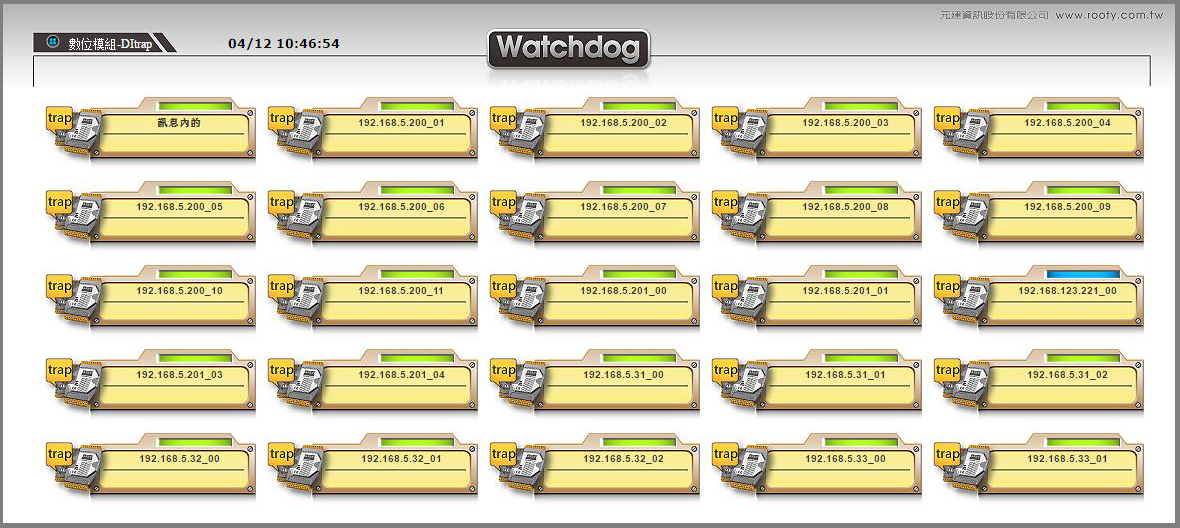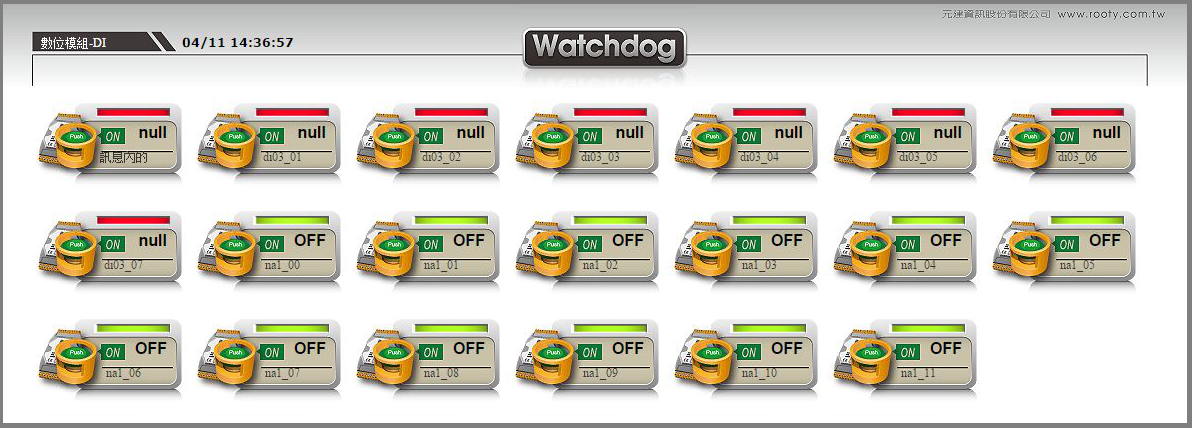
In the daily operations and maintenance of an information center, digital input (DI) and digital output (DO) are commonly used in industrial applications and computer room environmental monitoring systems.
The Watchdog IT Operations Monitoring System employs a comprehensive monitoring strategy, not only monitoring the information room environment but also integrating multiple devices such as uninterruptible power supplies (UPS) and intelligent power distribution units (PDU), providing rich event information and data types for monitoring projects and alert mechanisms. This assists the native 【room monitoring system】 in integrating into the Watchdog system.
Wide Applications of Digital Input (DI) and Digital Output (DO):
Digital input is not limited to environmental monitoring in computer rooms. Its DI function is suitable for ON/OFF type physical switch control, commonly seen in:
Digital Input DI:
➢ Sources of triggers for access control and camera snapshots (e.g., infrared sensors)
➢ Physical button execution touchpoints for emergency handling (e.g., emergency shutdown, one-click shutdown)
Digital Output DO:
➢ Drive lighting
➢ Drive power switches
➢ Drive emergency shutdown indicator lights
Signal Transmission Methods of Digital Input (DI):
The signal transmission methods of digital input are divided into active (Active Message) and passive (regular polling to obtain signal status). Active signal transmission is more common in micro PLC and modular PLC.
Active Digital Input DI Trap:
➢ Emergency shutdown (one-click shutdown): Execute emergency shutdown action through physical buttons.
➢ Access control camera snapshot recording: Use infrared sensors to activate the camera, recording snapshots of access to the IDC computer room.

Passive Regular Polling for Signal Acquisition Digital Module-DI:
The application of the passive digital module-DI is for target detection equipment that cannot actively transmit messages to the detection system and is less sensitive. The detection system can use active and regular data collection methods to obtain detection data at intervals.
Monitoring targets mainly include those that do not require real-time monitoring and are relatively insensitive devices. The abnormal status of these devices will not immediately affect the overall operation of the system, but long-term monitoring is still necessary to prevent accidents.
For example, by detecting once every 5 minutes, the system can monitor for water leaks or if the main door has been left open for more than 10 minutes.
